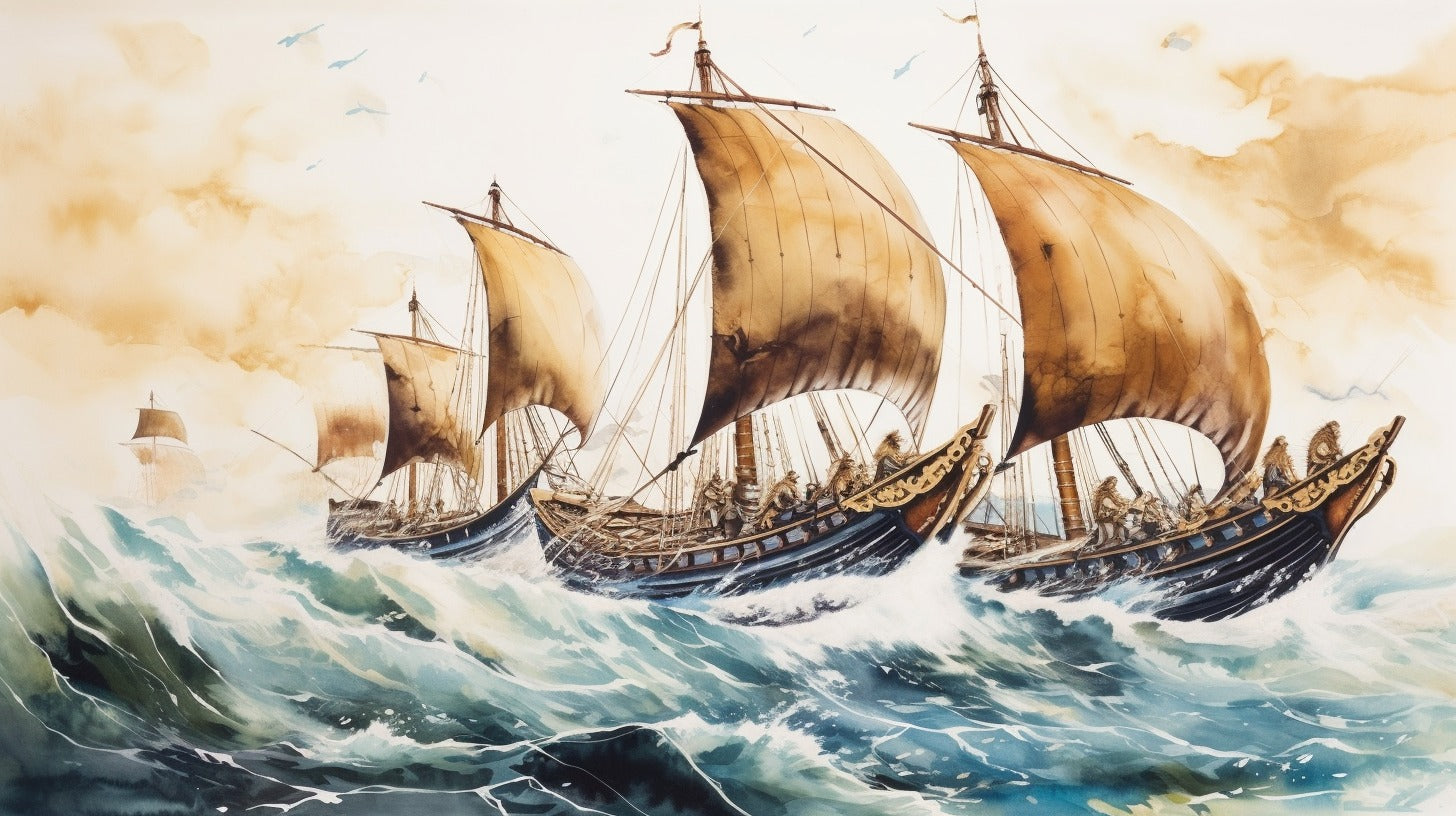
The Vendel Period: A Journey Beyond the Vikings
In the annals of Scandinavian history lies a period of transition and transformation—the Vendel Period. Serving as a crucial link between the tumultuous Migration Period and the famed Viking Age, this era beckons us to explore its depths, unraveling its significance, cultural nuances, and historical impact. Join us as we embark on a journey beyond the Vikings to uncover the mysteries of the Vendel Period.
What is the Vendel Period?
The Vendel Period, spanning roughly from the 6th to the 8th century AD, derives its name from the Vendel parish in Uppland, Sweden, where significant archaeological finds have been unearthed. This era is renowned for its distinctive material culture, societal structures, and artistic expressions, serving as a pivotal era in the history of Scandinavia.

Ottarshögen in Vendel (Public Domain)
Origins and Historical Context
Emerging in the aftermath of the Migration Period, a time characterized by widespread migrations and cultural upheavals across Europe, the Vendel Period represents a unique cultural milieu in Scandinavia. As tribes settled in the region, a complex societal landscape began to take shape, laying the groundwork for the development of the Vendel culture.
The Vendel Culture
Characterized by a fusion of Germanic, Nordic, and Baltic influences, the Vendel Period witnessed the rise of powerful chieftains and the establishment of complex societal structures. From its intricate artistry to its hierarchical social order, the Vendel culture left an indelible mark on the Scandinavian landscape.
Art and Craftsmanship
Artisans during the Vendel Period exhibited remarkable skill and creativity, producing intricate metalwork, ornate jewelry, and elaborate textiles. These artifacts not only served utilitarian purposes but also reflected the cultural values and aesthetic sensibilities of the time. The iconic Vendel helmets, adorned with symbolic motifs, stand as testament to the artistic prowess of the period.

Ornamented iron fragments from the Vendel XIV grave (Public Domain)
Social Structure and Daily Life
In Vendel-era Scandinavia, societal structure was hierarchical, with chieftains wielding considerable authority. Daily life revolved around agriculture, trade, and communal rituals, fostering a sense of solidarity and tradition among the populace. The rich tapestry of Vendel society is woven with threads of kinship, honor, and communal bonds.
Vendel Period Artifacts
The material remnants of the Vendel Period offer invaluable insights into the customs, beliefs, and technological advancements of the time. From weapons and armor to jewelry and burial customs, each artifact provides a window into the complexities of Vendel-era society.

Vendel Helmet from Valsgarde by Sven Rosborn (Public Domain)
Transition from Vendel to Viking Age
The transition from the Vendel Period to the Viking Age marked a significant turning point in Scandinavian history, ushering in an era of expansion, exploration, and cultural exchange. Political upheavals, technological advancements, and external pressures contributed to the decline of the Vendel Period and the emergence of Viking Age societies.
Impact on Scandinavian Society
The advent of the Viking Age brought about profound changes in Scandinavian society, including increased maritime trade, territorial expansion, and cultural assimilation. Despite the transition, the legacy of the Vendel Period endured, shaping the cultural landscape of medieval Scandinavia.
Historical Significance
The Vendel Period holds immense historical significance, serving as a bridge between the Migration Period and the Viking Age. Its cultural, social, and political developments laid the groundwork for the subsequent evolution of Scandinavian civilization, leaving an indelible mark on the region's identity.

Vendel I Sword (Public Domain)
Cultural Legacy
The artistic achievements, societal structures, and material culture of the Vendel Period continue to captivate scholars and enthusiasts alike, offering valuable insights into the complexities of early medieval Scandinavia. Its legacy lives on in the traditions, customs, and heritage of the Nordic region.
Modern Discoveries
Recent archaeological discoveries and interdisciplinary research have shed new light on the Vendel Period, challenging previous assumptions and expanding our understanding of this enigmatic epoch. Excavations at key sites across Scandinavia have unearthed a wealth of artifacts, while advanced techniques have facilitated more precise dating and interpretation of archaeological remains.
Conclusion
The Vendel Period stands as a testament to the resilience, creativity, and ingenuity of early medieval Scandinavian society. Its legacy continues to shape the Nordic region, serving as a reminder of the rich tapestry of history that continues to inspire and intrigue us to this day. Join us as we journey beyond the Vikings to uncover the mysteries of the Vendel Period and unlock the secrets of Scandinavia's past.




